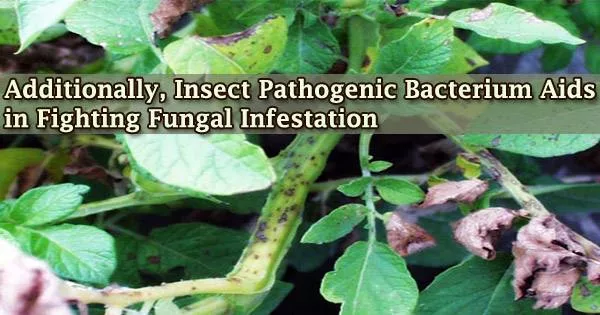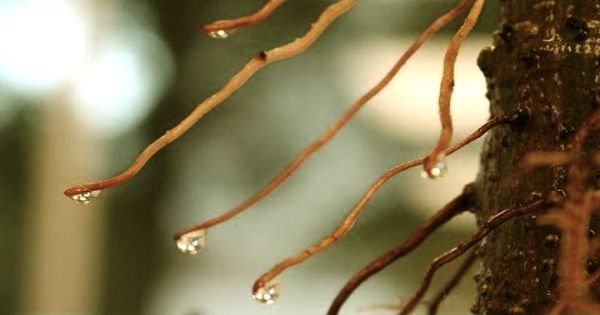In many areas of the world, future food shortages are anticipated to worsen. In light of this, environmentally friendly biological methods that, unlike the use of chemical pesticides, could boost the output of cereals and other food crops are being researched.
Crops are already protected against a variety of insect pests by the bacteria Photorhabdus luminescens, which is also employed as a bioinsecticide. P. luminescens can also defend plants against fungus, according to recent research from the Johannes Gutenberg University Mainz (JGU) in Germany.
This extra effect is brought on by the bacterium’s secondary cell shape. This variation first colonizes the fungal mycelium before obliterating it by degrading chitin, a crucial element of the fungal cell wall. The findings of this study could have a big impact in the future, especially in terms of cereal production.
“We see this as a prime opportunity to make farming more environmentally friendly and sustainable with the help of these bacteria,” said Professor Ralf Heermann of JGU.
Biological methods may result in higher crop yields
Crops are sensitive to environmental pressures, illnesses, and pest infestations just like other plants. Given the expanding global population, this has an effect on crop yields, food production, and raises questions regarding food security.
Furthermore, we were able to show that the secondary cell type of the bacterium colonizes the fungal hyphae in particular. This sets in motion one of the first mechanisms that protects plants against pathogens. Thanks to our results, we can now propose a new use for P. luminescens as an organism that both promotes plant growth and protects plants against fungal infection.
Dr. Nazzareno Dominelli
The largest agricultural losses are a result of weed invasion, animal pests, plant illnesses brought on by bacteria, fungi, and viruses, and plant pests. Higher yields were previously guaranteed through the intensive application of chemical plant protection agents, which also increased the availability of food.
However, this comes at the expense of harm to the environment, the danger of deadly toxicity for humans and non-target creatures like pollinating insects, and last but not least, the unintended alteration of the soil microbiome composition.
The use of biological agents, such as rhizobacteria, which encourage plant growth, and nematodes, which target insect pests, is an alternate strategy. These are two instances of cutting-edge, environmentally friendly agricultural methods for eradicating plant pests.
Primary cells of Photorhabdus luminescens kill insects and make them glow
The use of Photorhabdus luminescens as a helpful organism that kills insect larvae is one of these more environmentally friendly methods. This bacteria coexists with tiny nematodes, which enter the insect larvae and then release the bacterium once inside. This causes the release of various poisons, which kill the insect larvae, as well as the bioluminescent enzyme luciferase, which causes the glowing of the deceased larvae.
About two years ago, the study team of Professor Ralf Heermann found that P. luminescens has an extra phenotypic cell that can live in soil by itself even though it cannot form a symbiotic relationship with nematodes.
Though genetically similar to the parent form, this secondary cell type lacks several phenotypic characteristics, such as bioluminescence. However, new research from the team indicates that these secondary cells are remarkably potent in preventing fungal infection.
Heermann’s team of microbiologists used beef tomato plants as an example to demonstrate how the bacteria can avoid infestation by the phytopathogenic fungus Fusarium graminearum as they colonize the fungal hyphae and break down the chitin there.
The chitinase enzyme and chitin-binding protein were involved in the molecular mechanism that the researchers were able to pinpoint. This gives the bacteria the ability to break down a fungus’s structure, specifically its cell wall, and essentially stop fungus growth.
New potential application to promote plant growth and protect against fungal infection
“Furthermore, we were able to show that the secondary cell type of the bacterium colonizes the fungal hyphae in particular. This sets in motion one of the first mechanisms that protects plants against pathogens,” explained Dr. Nazzareno Dominelli, a member of Heermann’s team and the lead author of the recently published paper.
“Thanks to our results, we can now propose a new use for P. luminescens as an organism that both promotes plant growth and protects plants against fungal infection.”
The investigation into P. luminescens’ intriguing potential for biological crop protection will continue, according to the research team. The secondary, non-luminescent cell type, which aggressively seeks out the roots of plants, may provide significant biotechnological advantages for agriculture, according to early indications.
















